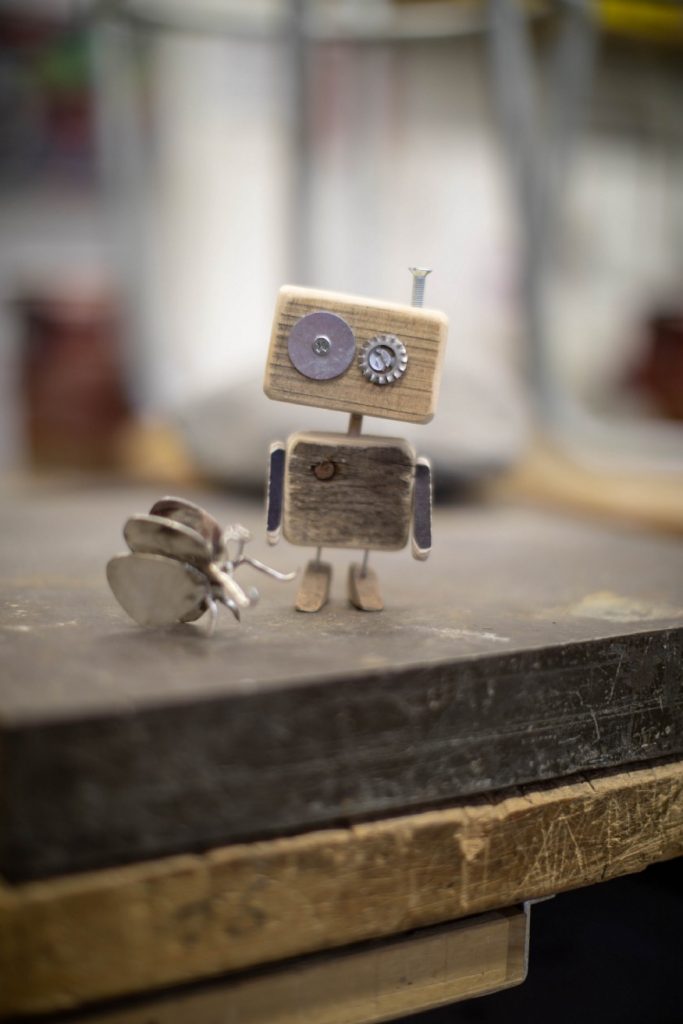I stumbled across the Little Lost Robot website courtesy of someone (I apologize for not noting who it was) on my Twitter feed. It caught my eye as the approach to the possibilities of an increasingly robotic future is more hopeful than most I’ve seen and most of the ones I’ve featured here.
Here’s what they’re all about from the Little Lost Robot website,
About
Little Lost Robot is a new CIC [community interest company] founded by Artists Ruby Jennings and Joseph Wilk. Coming from contrasting artistic backgrounds their skills are wide ranging – from structural set design to creative coding. They use technology to create a vision of the future that is non-slick, human centric and gloriously humane in all its messy domestic parts.
…
Leviathan
A piece of work discussing our relationship as individuals with our ideas of the future world and our place in it. Leviathan is a moving, reactive, breathing object created from inorganic materials.
Leviathan challenges our relationship with the unknown and tendency to create monsters mirroring our own fears. Any technology sufficiently complex and disruptive to our social norms has lead to us to create those same robotic monsters of the unknown. While there is much to be concerned about in Robotics and its effects on society, understanding, ownership and transparency are they way to begin the debate and see the monster for what it is and our relationship with it. Robotics is a highly technical and academic field, heavily rooted in car automation and high cost, dangerous machines. Leviathan brings the mechanics of the robot but makes them soft and tangible. The expression of the human in puppetry, challenging our relationship with something that is both machine yet animal, industrial yet social. The alchemy of computing in responsiveness and behaviour and the history of our relationship with our planet and its animals through the reclaimed, recycled materials it is constructed from.
…
Stupid Cities
“Stupid Cities aims to improve the social equality of our cities by using placemaking tools to highlight how their current design creates disability. This project is a scream and shout about the barrage of times wheelchair users are told they do not belong in public spaces. Having to risk personal safety to try move around badly designed cities. How our digital route finding and placemaking tools ignore important factors for wheel-based transportation like gradient, obstacles, surface roughness, undipped curbs, narrow pavements, parked cars, stairs, etc. Environments full of micro-aggressions stop people engaging in society.”
Our goal is to create tools to empower, connect allies to share & create visibility for world wide change.
For anyone unfamiliar with the concept of a community interest company (CIC), Wikipedia offers this description (Note: Links have been removed),
A community interest company (CIC) is a type of company introduced by the United Kingdom government in 2005 under the Companies (Audit, Investigations and Community Enterprise) Act 2004, designed for social enterprises that want to use their profits and assets for the public good.[1] CICs are intended to be easy to set up, with all the flexibility and certainty of the company form, but with some special features to ensure they are working for the benefit of the community. They are overseen by the Regulator of Community Interest Companies.
CICs have proved popular and some 10,000 were registered in the status’s first ten years.[2]
Getting back to Little Last Robot,

You can find this image and more on the Little Lost Robot blog.